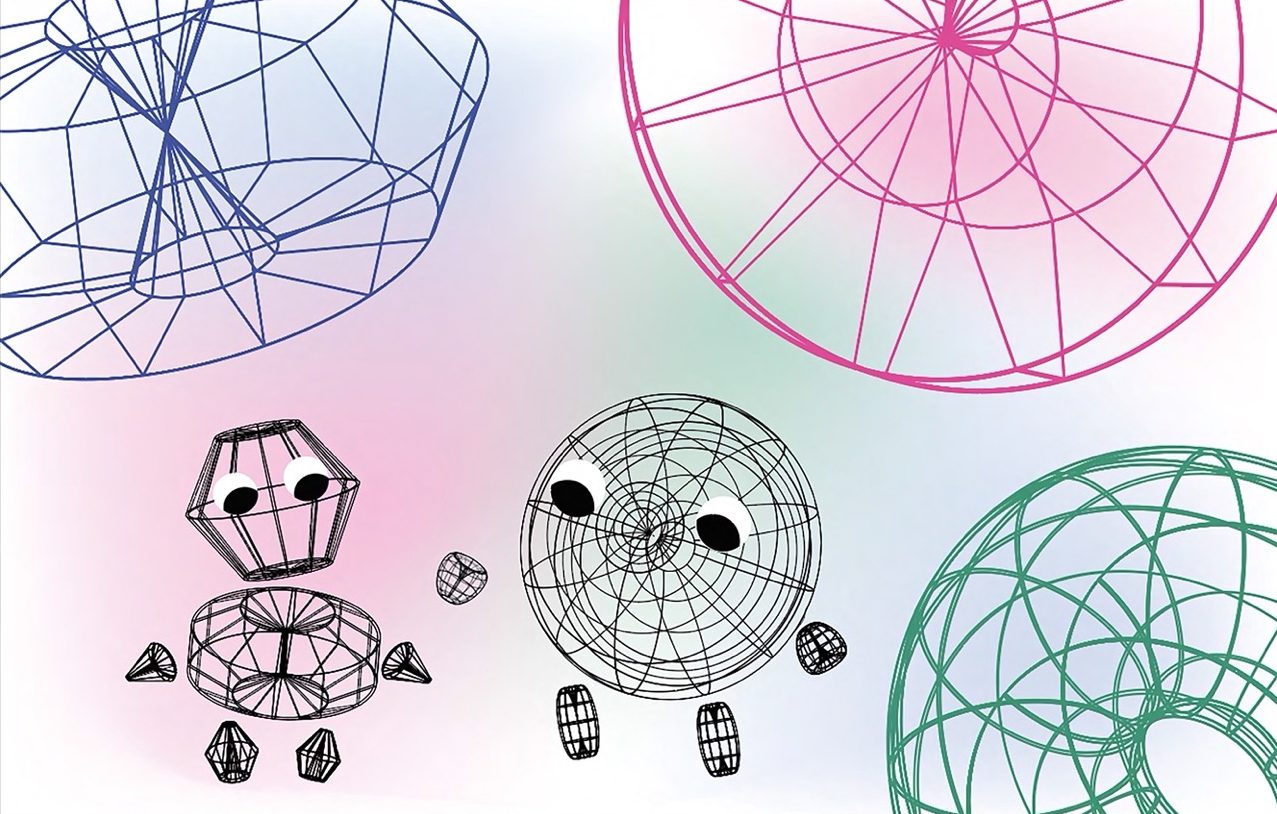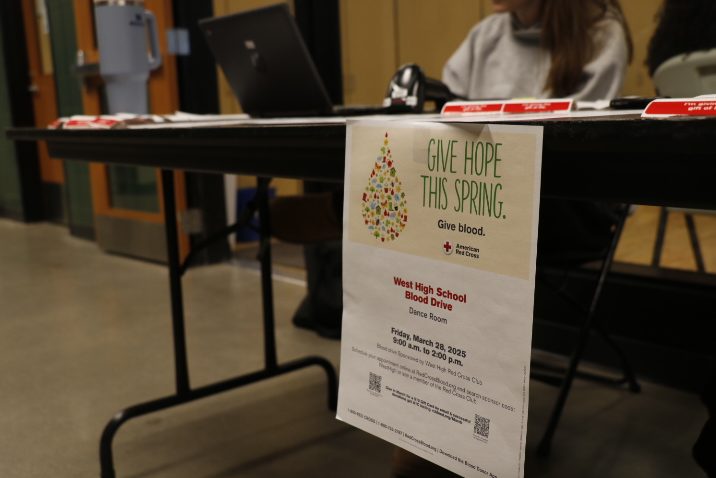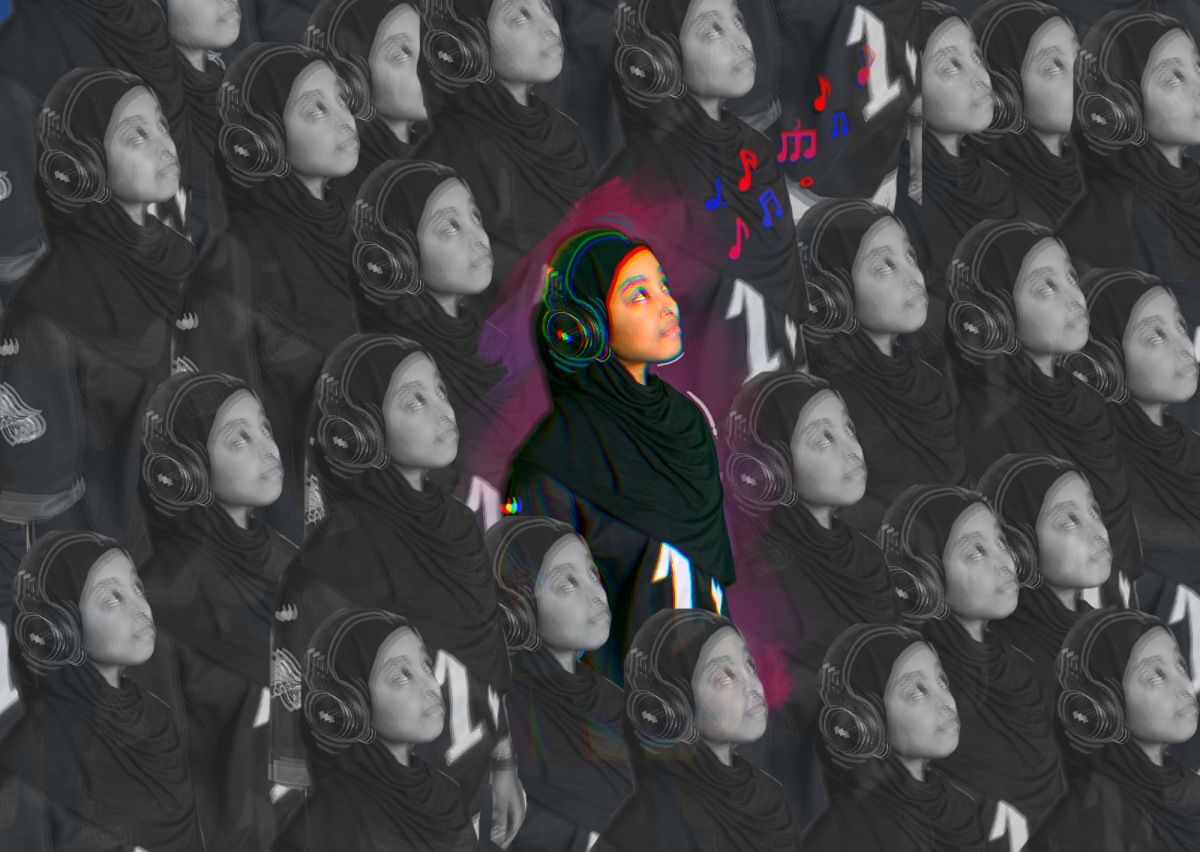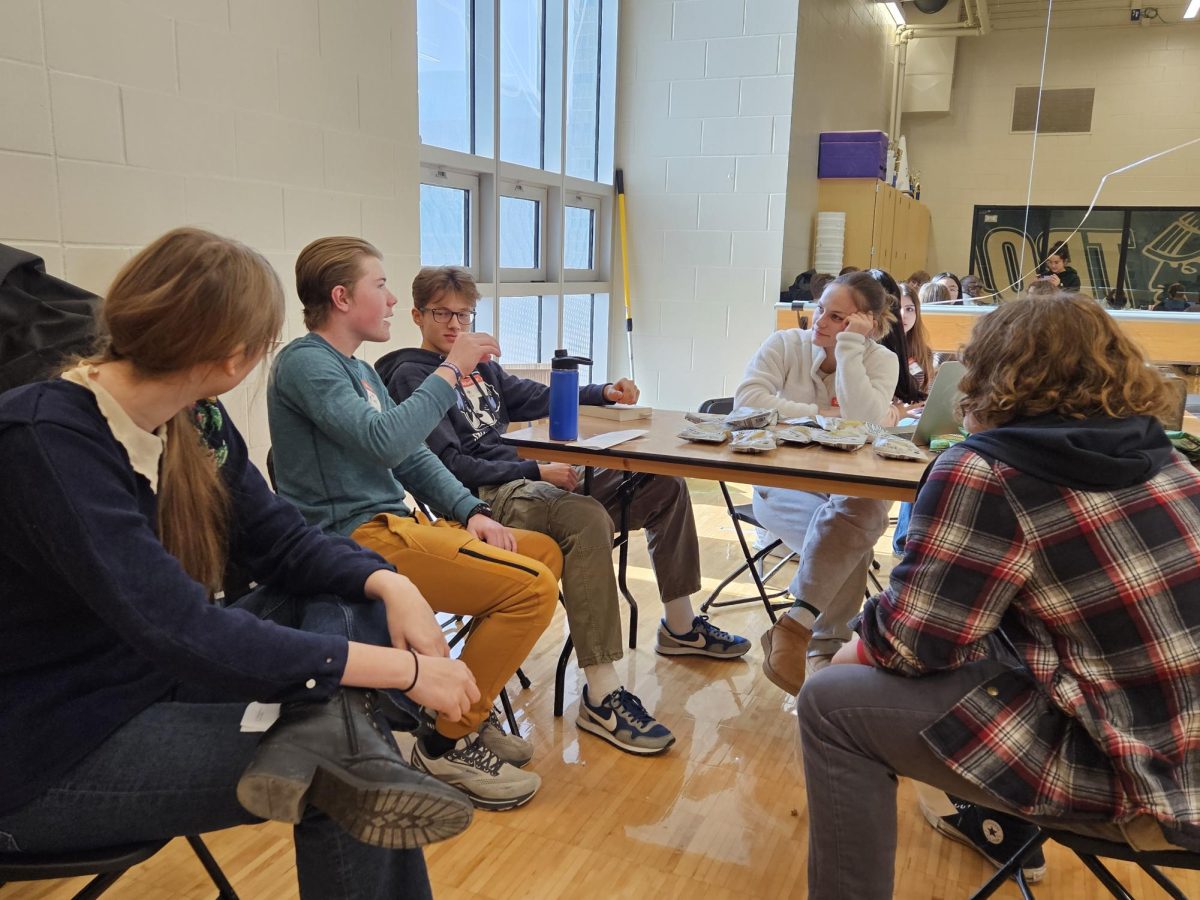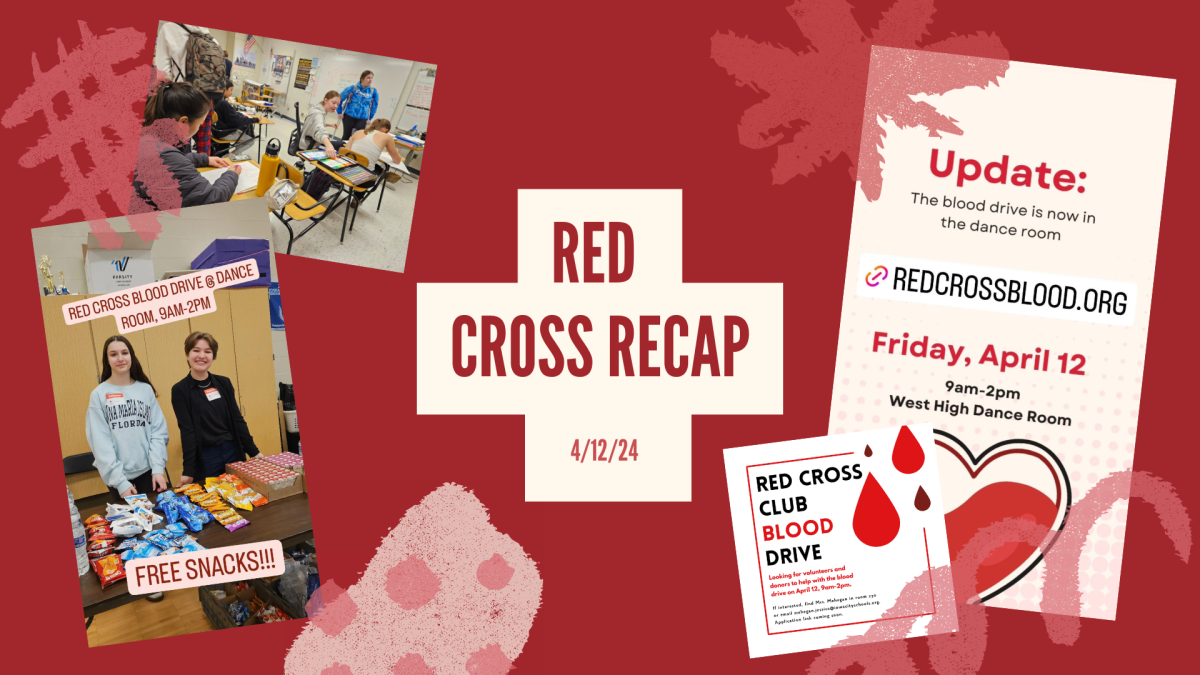Buzz — a single notification may only cause a small vibration, but it commands the attention of the typical teenager within seconds. Teenagers are constantly bombarded with notifications: a median of 237 per day, according to a 2023 Michigan Medicine study. Technology use often worsens during the school day, with students struggling to balance attention between devices and lectures. This rings true for Angel McCambry ’26, who recalls the difficulty of remaining focused throughout class at the start of the school year.
“[During] summer break, you can be on your phone as much as you want. Now at school, I’m so used to being on my phone,” McCambry said. “I won’t even realize the teacher [is] talking, and I’ll pull up my phone and be like, ‘Wait, what am I doing?’”
As technology companies compete for user engagement, teens face the consequences: technology addiction. Most consume social media and gaming content heavily, with the average screen time reaching eight hours and 39 minutes in 2021.
“[I spend] three hours a day on my phone,” Sawyer Smith ’25 said. “On my computer, it’s six or seven during weekends.”
As students browse online platforms, notably TikTok, Instagram and YouTube, many get engrossed in the content and lose track of time.
“You don’t notice how much you’re scrolling until you look at the time,” McCambry said. “[Social media] has taken a lot of my time and messed with my attention span.”
Additionally, with the rise of addictive video games containing hyper-realistic graphics and immersive audios, gaming has become popular among teenagers who dedicate hours to the activity.
“Games are so addictive because you are given an immediate [reward], [unlike] your homework,” Smith said. “[As a result], I have [spent] 2,000 hours on ‘Terraria.’”
Students play computer games to combat boredom in class, with a plethora of options ranging from “Tetris” to “Slope” being one click away.
“If I’m really bored in class, I have ‘2048 Cupcakes’ [bookmarked], but I [don’t frequently play] computer games,” McCambry said.
Dr. Shaun Vecera, a professor at the Psychological and Brain Sciences Department of the University of Iowa, acknowledges that the short-term exhilaration from video games often appears more valuable than other content.
“The [dopamine] reward, coupled with the fact that a game is very attractive, makes [playing video games] compelling,” Vecera said. “It makes it easy to choose the video game over the chapter in the textbook that you need to read.”
Students’ attention spans decline approximately 10 to 15 minutes into instructional time due to the brain’s constant desire for reward. Educators, such as Psychology teacher Camille Crossett, have responded to this by adapting their curriculum to be more engaging.
“A lot of teachers are looking into what we call ‘gamifying’, where you make learning [similar to] what [students] are doing on their phones or Chromebooks,” Crossett said.
For Chemistry teacher Jeff Conner, this involves incorporating shorter, more engaging videos instead of longer alternatives.
“An educational video that’s 45 minutes long, compared to the variety of videos on Snapchat and TikTok and YouTube … that [students] normally consume, is going to be way drier,” Conner said. “If I do bring videos into my class, it’s usually something short.”
Teachers struggle to keep students engaged during class, especially with the increasing prevalence of student multitasking. Crossett notes the downsides multitasking has on students’ ability to comprehend class material.
“We have a lot of students who firmly believe that they are good at multitasking, which is something that the human brain is not good at,” Crossett said. “[They] will be like, ‘I can switch between this game on my Chromebook and what I’m doing in class,’ and they are not as good at it as [expected]. It’s really diminishing what they are able to do in class.”
Despite this, multitasking has become a common practice for students outside of the classroom as well.
“I’ll watch a YouTube video in the background [when completing homework],” Smith said. “[But when] my Spanish assignment was due, I didn’t submit it because I was tired [as a result] of watching YouTube after I got home.”
Vecera elaborates on how multitasking increases distractions, weakening cognitive functions such as thinking, learning and memory.
“[Multitasking] is the worst thing you can do for your learning,” Vecera said. “If I put you in a situation where I had you multitask, you would [perform] worse than if I had you focus on a single task. Individuals who engage in multitasking have a harder time focusing.”
Divided attention is shown to worsen content retention. Multitasking poses harmful impacts on student performance and productivity.
“For homework, I had a long [reading] passage. I tried to skim through it and look for the key points, but that doesn’t work, especially with longer texts. I’ve been late on every reading assignment,” Smith said.
Additionally, diminishing attention spans negatively affect mental resilience and comprehension during standardized testing.
“My favorite subject is English, but when it’s a [standardized test] and there are long paragraphs, it’s not entertaining. I’m like, ‘I don’t want to do it,’” McCambry said.
Conner also emphasizes that the rapid consumption of media results in students facing greater difficulty with reading passages.
“It takes a lot of attention to keep your mind focused on the task of reading. We’re so used to consuming media quickly, flipping from thing to thing, that reading an individual paragraph is hard.”
Limited user attention spans perpetuate the development of engaging graphics and algorithms, which are designed to hook users through stimulating feeds, eye-catching colors and vivid imagery. According to a 2021 Stanford Medicine report, bright colors activate the visual cortex; this overstimulates neurochemical pathways, notably dopamine, thus increasing user addiction to such platforms.
“[Attention] goes back to [a matter] of salience — how distinctive something [is]. One way of thinking about salience is with the kinds of ads and other media present on social [platforms],” Vecera said. “The flickers and motion tend to be very dynamic and can capture your attention in potent ways. You can contrast that with something that’s more static, like a bunch of text.”
Pairing short-form content with intriguing thumbnails are among the most effective marketing tactics employed by content creators.
“I choose the [YouTube video] with the most interesting thumbnail. Sometimes, I make it into short-form content,” Smith said. “I watch the video for two seconds and refresh the page [to] look for a different video; it’s like, ‘this is so boring.’”
In addition to reduced attention spans and cognition in teenagers, a 2014 study identified additional effects of technology addiction, including depressive symptoms.
“[High schoolers] don’t always have the best hearts, so they get on social media and [cyberbully] for no reason,” McCambry said. “That can really impact somebody’s mental health and make them depressed.”
Vecera echoes McCambry, stating that negative thoughts affect students’ mental states and focus.
“It’s not just external distractions, it’s also internal [distractions] and mind-wandering — things that you can’t stop thinking about,” Vecera said. “One type of internal distractor is intrusive thoughts, which are [typically] negative thoughts.”
With various internal and external distractions preventing sustained attention, Vecera stresses the importance of understanding how the brain processes information to increase attention spans effectively.
“‘Metacognition’ is thinking about thinking. It’s important to have good metacognitive skills as a learner, because in order to learn effectively, you have to be able to reflect on your own learning process. You have to be able to know when you’ve learned something, and more importantly, when you haven’t learned something,” Vecera said.
McCambry follows this principle, revising her study strategies to reduce distractions in the surrounding environment.
“Recently, I’ve been trying to [focus on] school, so I’ve been [putting my phone on] ‘Do Not Disturb.’ It’s still tempting, but it’s [getting] easier.”
Although this issue is most prevalent among teenagers, declining attention spans is a universal struggle. 42% of children already own a phone by age 10 as of 2023, according to the Child Mind Institute.
McCambry’s experience around toddlers has made her realize how dependent kids are on overstimulating children’s TV shows that prioritize engagement over educational value.
“Those kids are [heavily reliant] on iPads … Their brains aren’t fully developed, [and] they’re running around [watching] CoComelon. I would actually learn something from [older] shows,” McCambry said.
Children’s TV shows are often hyper-stimulants, shifting from frame to frame in seconds. This creates a feedback loop that encourages children to continue consuming the content. Technology addiction impairs neurological development throughout childhood, setting the stage for reduced cognitive function in teenage years.
“The [brain’s] developmental timecourse is affected by adolescent [distractibility] because [they] are in environments that are more distracting,” Vecera said.
Crossett notes how the impacts of technology addiction affect everyone, from children to adults alike.
“It’s not just teenagers who fall victim to [technology addiction],” Crossett said. “I go home and scroll on my phone for hours after school — it’s something that everybody does at this point. We’re going to continue seeing the impacts of that [in the future].”

